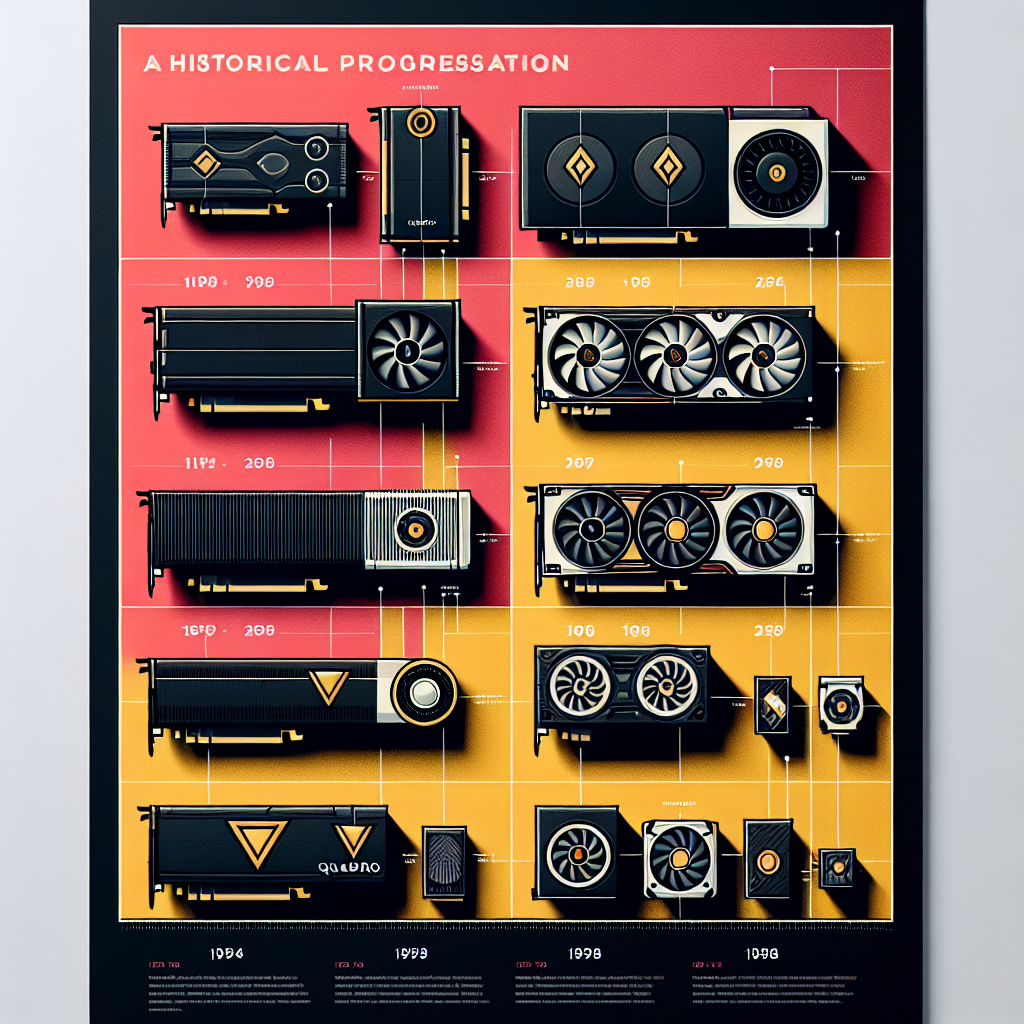Your cart is currently empty!
The Evolution of Quadro Graphics Cards: A Complete History

Quadro graphics cards have become a staple in the world of professional graphics processing, offering unparalleled performance and reliability for demanding tasks such as 3D rendering, video editing, and scientific visualization. But how did these powerful GPUs come to be? Let’s take a look at the evolution of Quadro graphics cards and their complete history.
The story of Quadro graphics cards begins in the late 1990s when NVIDIA, a leading graphics technology company, introduced the Quadro brand as a way to differentiate their high-end professional graphics cards from their consumer-oriented GeForce line. The first Quadro card, the Quadro, was based on the GeForce 256 GPU and was aimed at professionals working in fields such as CAD/CAM, animation, and digital content creation.
Over the years, NVIDIA continued to innovate and improve the Quadro line, introducing new generations of GPUs with increased performance and capabilities. The Quadro2 series, released in 2000, featured improved geometry processing and hardware transform and lighting capabilities, making them ideal for demanding 3D applications.
In 2003, NVIDIA introduced the Quadro FX series, which marked a significant leap forward in terms of performance and features. These cards were based on the company’s new NV30 architecture, which featured improved pixel shading and floating-point processing capabilities, making them ideal for high-end visualization and simulation tasks.
The Quadro FX line continued to evolve over the years, with NVIDIA introducing new features such as SLI support, CUDA technology for general-purpose GPU computing, and advanced driver optimizations for popular professional applications. The Quadro FX became the go-to choice for professionals working in industries such as film and television production, engineering, and scientific research.
In 2012, NVIDIA introduced the Quadro K series, which marked a shift towards a more unified architecture that was based on the company’s consumer-oriented Kepler GPUs. These cards offered improved performance, energy efficiency, and support for advanced features such as 4K display resolutions and NVIDIA’s GPU Boost technology.
The most recent iteration of Quadro graphics cards is the Quadro RTX series, which was introduced in 2018. These cards are based on NVIDIA’s Turing architecture and feature real-time ray tracing capabilities, AI-enhanced rendering, and advanced shading technologies. The Quadro RTX series represents the cutting edge of professional graphics processing, offering unparalleled performance and capabilities for demanding tasks such as ray-traced rendering, AI-driven workflows, and virtual reality content creation.
In conclusion, the evolution of Quadro graphics cards has been a testament to NVIDIA’s commitment to delivering high-performance, reliable solutions for professionals working in demanding industries. From the early days of the Quadro brand to the latest Quadro RTX series, these GPUs have continued to push the boundaries of what is possible in the world of professional graphics processing. With each new generation, NVIDIA has continued to innovate and improve the Quadro line, cementing their position as the industry leader in professional graphics solutions.

Leave a Reply